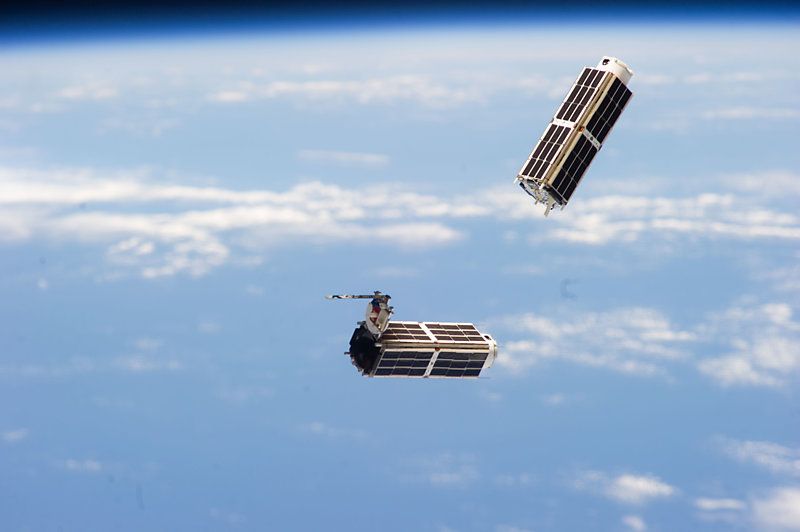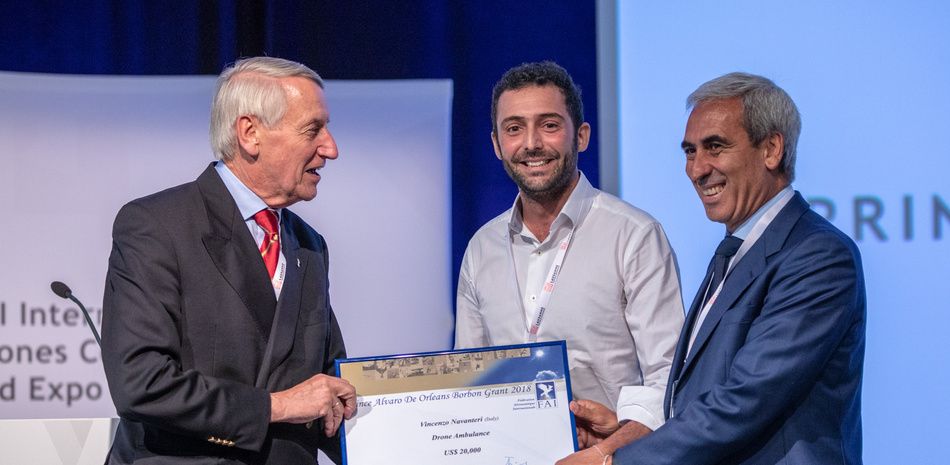https://speaker.future.consulting/en/home/search/video/video…re-cancer/
Lab-grown meat could cut emissions 96%
Posted in food
The free market Adam Smith Institute says we could be on the cusp of a revolution.
When I wrote that 41% of land in the contiguous United States is used to feed livestock, I thought it was a pretty high number. According to a new report from the free market-leaning Adam Smith Institute, however, the UK has us beat on that front:
Apparently a full 85% of the UK’s land footprint is associated with animal product production.
Space is all the rage, so it seems. The number of small spacecraft – including satellites – being manufactured has rocketed in recent years, and future forecasts are equally explosive. The first-ever internationally agreed requirements have just been published, enabling the industry to cruise even higher.
The small satellites industry is taking off. According to a recent report by SpaceWorks1), an aerospace company focused on delivering cutting-edge flight and space technologies, 2017 showed a 205 % increase in small satellite launches compared to 2016, with a record number still awaiting launch. What’s more, forecasts for future spacecraft production, often by new entrants to the industry, look equally celestial.
But producing these spacecraft involves some very specific requirements that newcomers to the market may not be aware of. To help harmonize the sector, ISO has just published the first-ever international technical specification for small spacecraft, which states the minimum requirements that every small spacecraft needs to comply with regardless of its mission.
The ORC1 gene might not be as indispensable as previously thought in DNA replication.
According to a study conducted by Hollings Cancer Center scientists at the Medical University of South Carolina, DNA replication in murine cells is possible even in the absence of origin recognition complex 1 (ORC1), a protein encoded by the homonymous gene that was previously thought to be indispensable [1].
Study abstract
The largest subunit of the origin recognition complex (ORC1) is essential for assembly of the prereplicative complex, firing of DNA replication origins, and faithful duplication of the genome. Here, we generated knock-in mice with LoxP sites flanking exons encoding the critical ATPase domain of ORC1. Global or tissue-specific ablation of ORC1 function in mouse embryo fibroblasts and fetal and adult diploid tissues blocked DNA replication, cell lineage expansion, and organ development. Remarkably, ORC1 ablation in extraembryonic trophoblasts and hepatocytes, two polyploid cell types in mice, failed to impede genome endoreduplication and organ development and function. Thus, ORC1 in mice is essential for mitotic cell divisions but dispensable for endoreduplication. We propose that DNA replication of mammalian polyploid genomes uses a distinct ORC1-independent mechanism.
A prestigious $20,000 prize has been won by the designer of a futuristic ‘drone ambulance’. Vincenzo Navanteri, 34, from Italy was awarded the Prince Alvaro de Orleans-Borbon Grant, worth $20,000, at the 2nd FAI International Drones Conference and Expo held in Lausanne on 1 September 2018.
He won the grant to help him and his team develop their idea of a self-piloting drone ambulance that could carry a single person for up to 150km at 110km/h.
Collecting the award Navanteri, said: “It is a pleasure to receive this grant, and to use it for development. As a company it is what we need. And, more than my own business, it will support the general development of this type of technology.”
https://paper.li/e-1437691924#/
EAA 2018 is upon us and we have an absolutely incredible line-up of papers for our session, Human, Posthuman, Transhuman Digital Archaeologies. We’ve decided to pre-circulate the papers amongst ourselves (and a few more publicly) and provide 5 minutes of presentation followed by 10 minutes of discussion. This was a bit of a compromise to stay on time, but still leave as much time as possible to discuss the ideas, as we are expecting to publish the session in the EJA. So, here’s the sesh:
Friday 7 September, 14:00 – 18:30, UB220.
14:00 Introduction (Marta Diaz-Guardamino Uribe, Cardiff University; Colleen Morgan, University of York; Catherine Frieman, Australian National University)
Sections of cities all over the world are being demolished to meet increasing demand for transport infrastructure. The process of building new roads, harbour crossings, metro systems and light rail lines seems unending. Large-scale construction includes loss of public space, housing and backyards.
Historic suburbs, such as Sydney’s Haberfield, have suffered. And then there’s the issue of cost blow-outs and traffic gridlock. There are rumblings, too, about environmental impacts and equity of access. But there is actually one public transport option that can mitigate many of these concerns: cable cars.
Cable cars now grace many urban skylines, including some of the world’s most populous, congested and poorest cities, such as Colombia’s city of Medellin, but also the US city of Portland. These cities have integrated cable cars with existing transport networks. The newer versions are cheap, quick to build and solar generating. Perhaps it’s time for Australia to start looking skyward for solutions.









